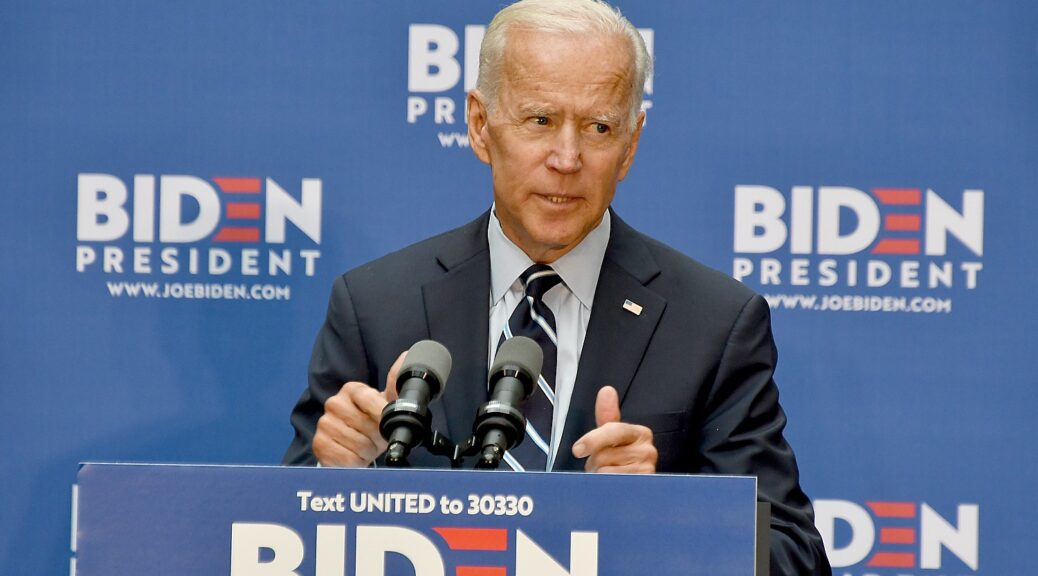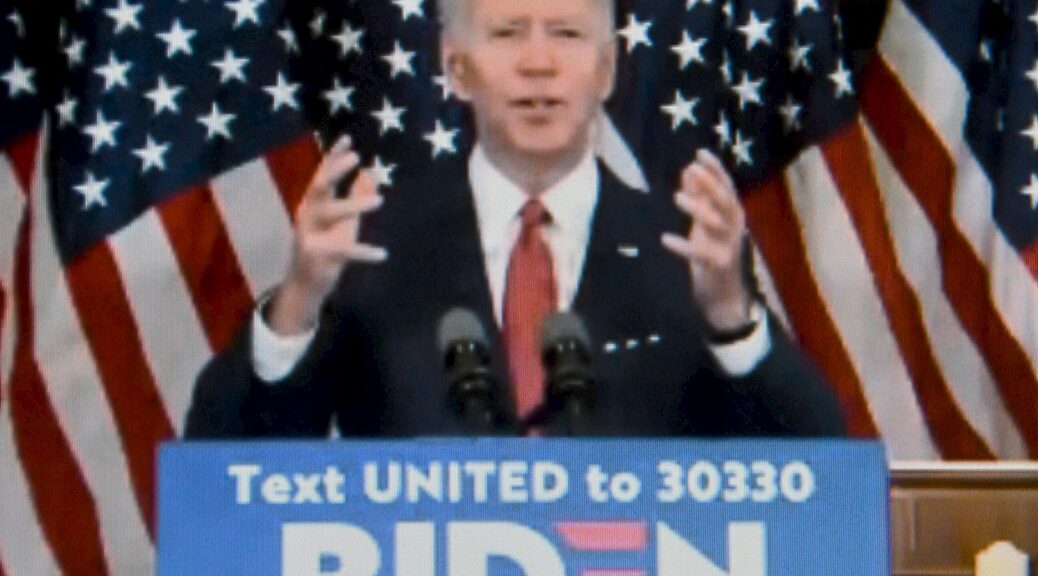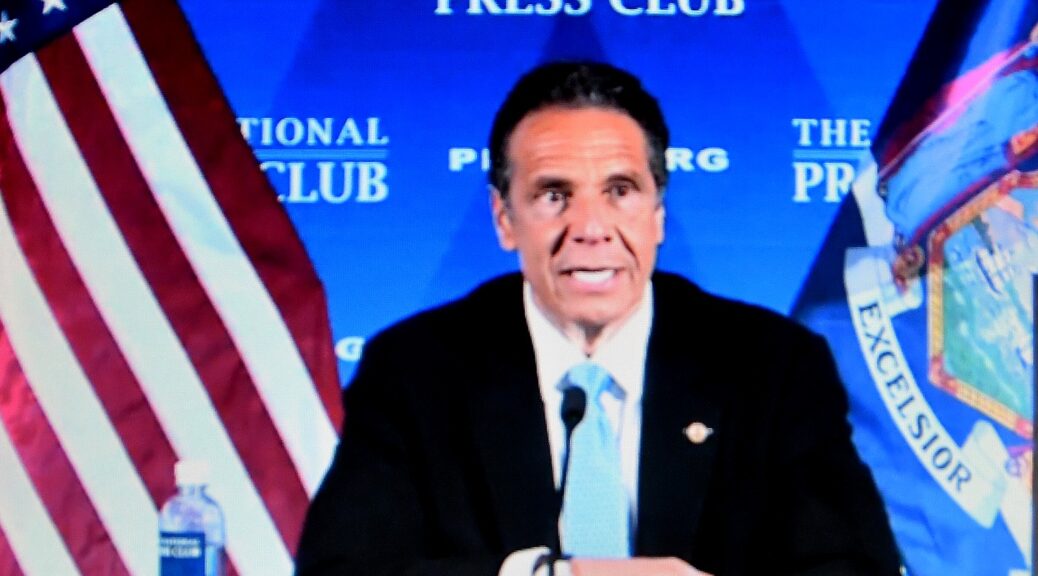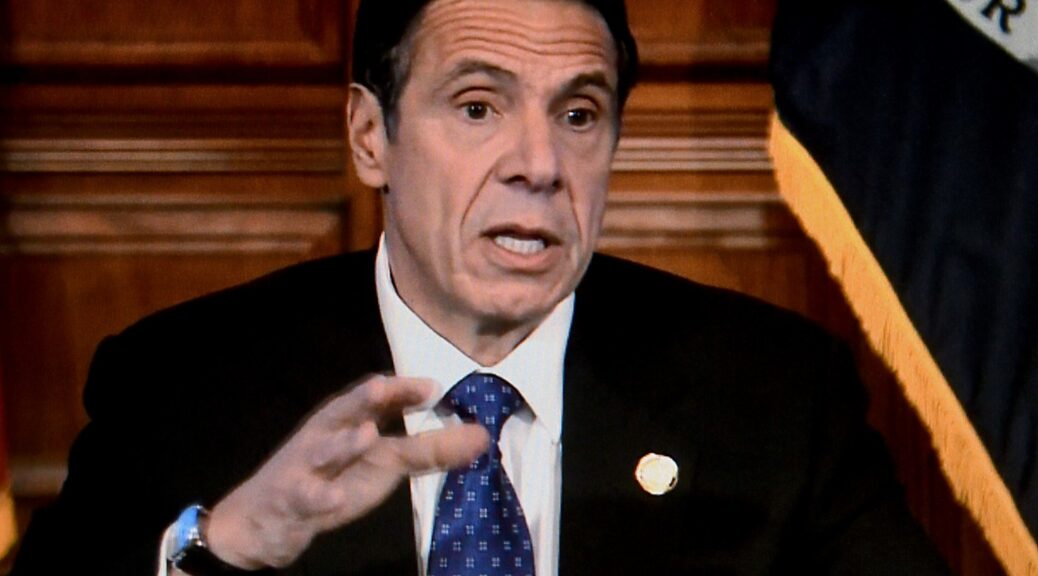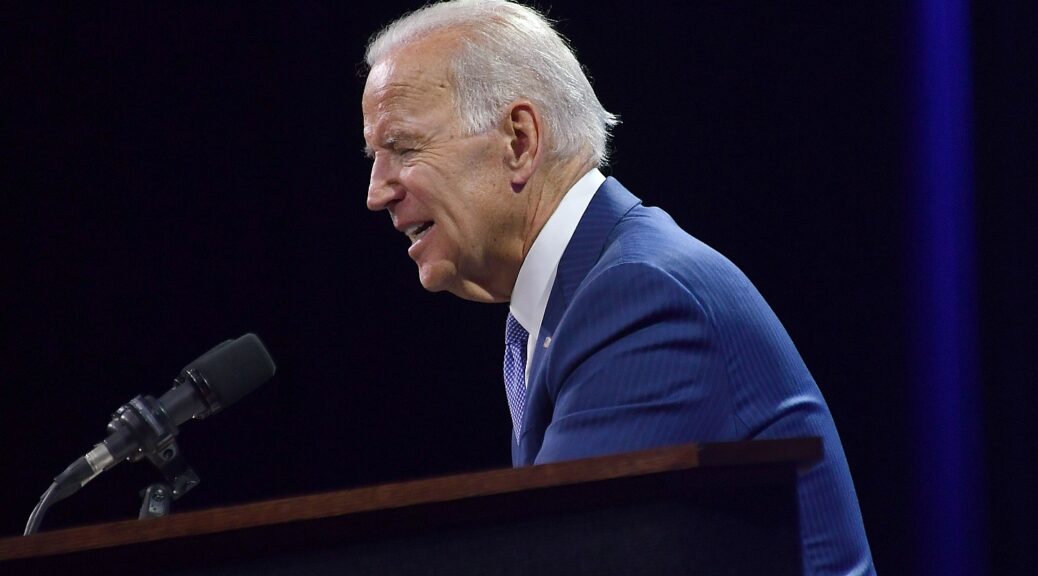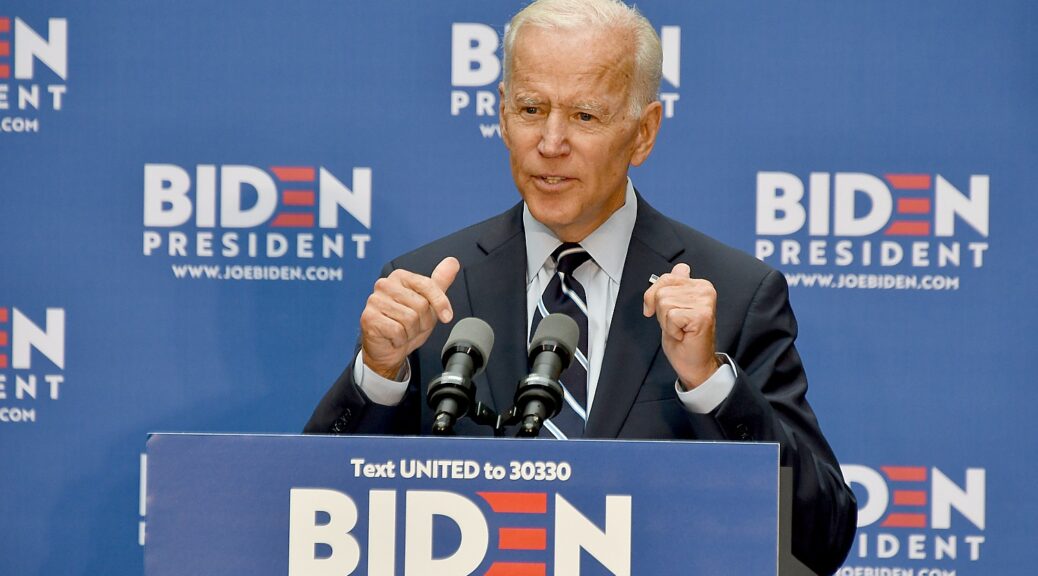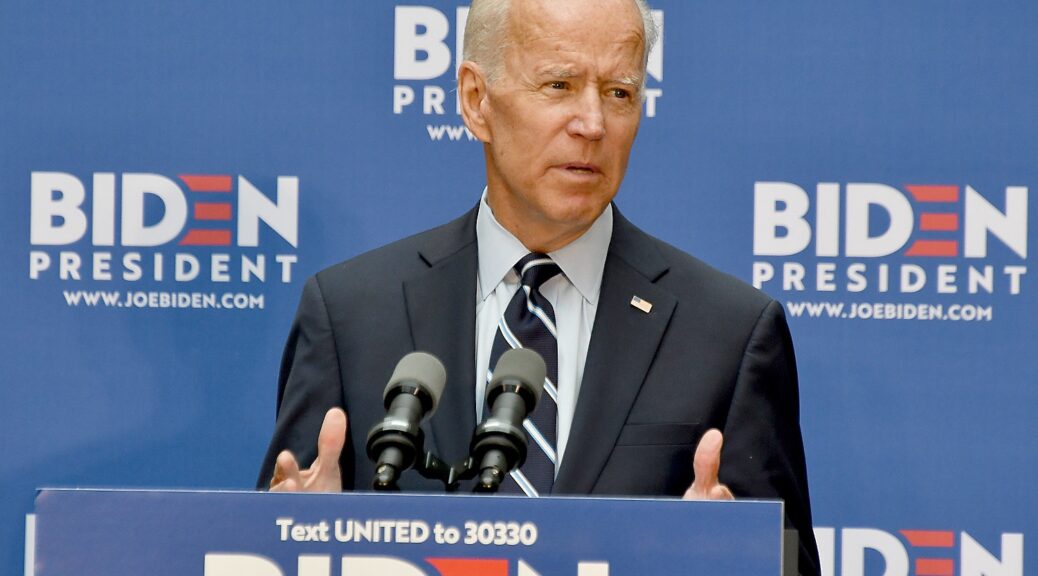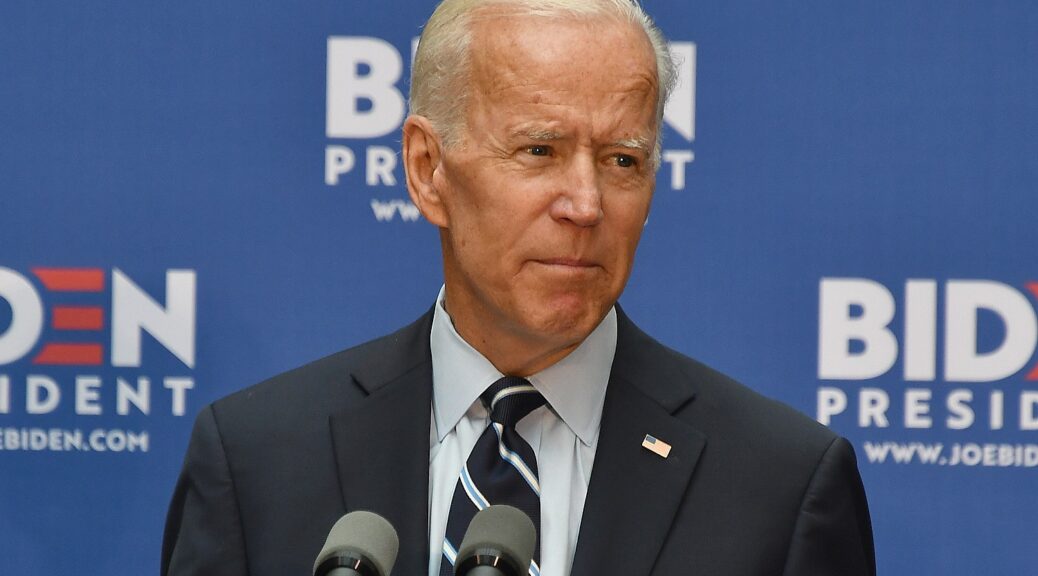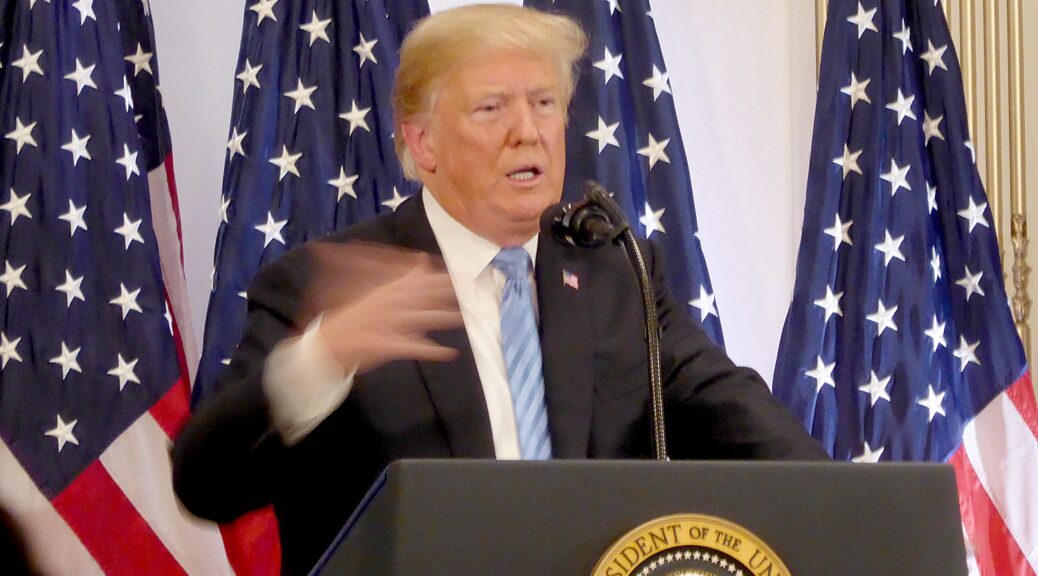
Vice President Joe Biden, the presumptive Democratic nominee for president, delivered remarks on the economy and the May jobs report which unexpectedly showed 2.5 million jobs added and an unemployment rate dipping slightly to 13.3%, instead of rising to as much as 20%. But that 2.5 million jobs reflects the fact that states have begun reopening; there were 40 million people who have filed for unemployment, so an unimaginable 37 million are still without jobs. And 13.3% is still higher than at any time during the 2008 Great Recession. Moreover, the Trump administration apparently changed the way certain numbers are calculated, so the actual unemployment rate could be 3 points higher, or 16.3%, which would be closer to what economists forecast. Trump also manages to ignore the fact that the stimulus program pushed by Democrats over Republicans’ objections, worked to keep the economy from descending into a Great Depression. He also ignored the disproportionate unemployment rates among Blacks and Hispanics, groups that are also suffering disproportionately from COVID-19. But Trump is desperate to put a rosy face on an economy while ignoring the fact the coronavirus pandemic is still spreading and his administration has done virtually nothing to provide a national program for testing, tracing and isolating, nor even set standards for workplaces and schools only some tepid guidelines. And Trump was desperate to shift attention from his Fascistic overreach of using military power used against peaceful protesters calling for an end to race-based police brutality.
Instead, Vice President Biden took Trump to task and offered his own analysis of the depth of harm to the economy and public health caused by Trump’s failure of leadership and his preoccupation with Wall Street over Main Street, wealth over wages.
Here is a transcript of Biden’s remarks: –Karen Rubin/news-photos-features.com
Good afternoon.
Before I speak to the economic situation, I have to take a moment to address something the President said this morning.
Toward the end of his remarks today, Donald Trump said he hopes that George Floyd “is looking down and seeing this is a great day for our country.”
He was speaking of a man who was brutally killed by an act of needless violence — and by a larger tide of injustice — that has metastasized on this President’s watch.
George Floyd’s last words — “I can’t breathe, I can’t breathe” — have echoed across our nation.
For the President to try to put any other words in the mouth of George Floyd — is frankly despicable.
And, the fact that he did so on a day when Black unemployment rose and black youth unemployment skyrocketed — tells you everything you need to know about who this man is and what he cares about.
Today, like all Americans, I was glad to see that two-and-a-half million Americans have gotten their jobs back.
For those families, that’s a sigh of relief.
And for all of us, it’s a reminder of the resilience of the American people.
To those Americans, I’m so proud of you, and so happy for you and your families.
I was disturbed, however, to see the President crowing this morning — basically hanging a “mission accomplished”’ banner when there is so much work to be done — and so many Americans are still hurting.
More than twenty million Americans — one out of every seven U.S. workers — are still out of work.
For an enormous swath of our country, their dreams are still on hold. They are still struggling to put food on the table. The unemployment rate remains the highest it’s been in nearly a century.
As I said, Black unemployment went up this month. Latino youth unemployment jumped to over 37 percent. Hispanic unemployment overall is four times higher than it was before the President botched his response to the pandemic. And I’m worried, when you look deeper at the data, that while temporary layoffs went down,permanent layoffs went up.
Donald Trump still doesn’t get it.
He’s out there spiking the football — completely oblivious to the tens of millions of people who are facing the greatest struggle of their lives. Those folks aren’t feeling any less pain today than they were yesterday.
People who’ve lost their health care in this crisis, they’re not celebrating today — especially when Donald Trump is still in court fighting to strip away health care protections from even more Americans.
The fact is, there are about 13 million less jobs today for American workers than the day that President Obama and I left office.
So while it’s wonderful to see ten percent of the families who lost their jobs due to Trump’s disastrous pandemic response start to make their way back — the President’s behavior makes me deeply worried for the 90 percent who haven’t.
So to all those families — who are scared, and hurting, and wondering what’s going to happen next: I want you to know I see you. I won’t ever forget you. And I won’t be satisfied – until this economy starts working for all of you.
Let’s be clear about something. The depth of this job crisis is not attributable to an act of God — but to the failure of a President. The truth is every country dealt with job losses due to the pandemic, but America was hit much harder out of the gate due to Trump’s complete mismanagement of the response.
This morning, he tried to compare our response to Germany’s and South Korea’s.
Okay, let’s compare. Germany has one-third of the deaths per capita that we do. South Korea has less than 300 deaths — total. America has four percent of the world’s population — and more than a quarter of the world’s deaths from this pandemic.
It’s no secret why that is.
Let’s get something straight: he did not act quickly.
For months, he downplayed the threat — falsely promising us that anyone could get a test — and claiming that “like a miracle it will disappear.”
He repeatedly praised China’s containment response – despite a litany of public appeals — including from me — not to bet American lives and the U.S. economy on the word of the Chinese government.
He refused to take action to get adequate testing in place — allowing the virus to spread further than it should have.
Columbia University found that 54,000 lives could have been saved if the administration had acted just two weeks earlier.
His failure didn’t just cost lives. It cost jobs.
New studies this week from Moody’s and Brookings confirm that half or more of those who lost their jobs would still be employed had Trump mounted a competent response like Germany and South Korea and other countries did.
We know why this happened. Donald Trump was more focused on the stock wealth of the biggest corporations than he was on the well-being of the American people.
It’s why he had his top economic advisors telling people to buy stocks instead of preparing our nation to brace for the pandemic.
Now — after 110,000 deaths and more than 20 million people still out of work — the consequences are clear.
We are still facing devastating unemployment, an historic health crisis, and a continuing crisis of violence, injustice, and indignity that is devastating Black Americans and diminishing the soul of our country.
These are some of the sternest challenges our nation has ever faced, and Trump is patting himself on the back.
He just has no idea what’s really going on in this country. He has no idea the depth of pain that people are facing. He remains completely oblivious to the human toll of his indifference. It is time for him to step out of his bunker and take a look around at the consequences of his words and actions.
Let’s be clear — a president who takes no responsibility for costing millions and millions of Americans their jobs deserves no credit when a fraction of them return.
But there’s a deeper concern here. As we recover, some of the temporary job losses we are still not on track to grow back in a way that will actually serve working people.
President Trump is still rewarding wealth over work.
All we hear coming out of the White House is calls for more tax cuts for big investors and big corporations. Well, they didn’t build this country. The middle class did — that’s who I fight for.
And if Trump continues to put the interests of CEOs and shareholders ahead of American workers, we’ll never get to where we need to be as a country.
Look, every American has a choice to make this November. Not simply what kind of President we want , but what kind of country we want. What kind of economy we want — and who that economy serves.
In the coming weeks, I will lay out in detail my comprehensive plan— not just to build things back to the way they were before COVID-19, but to build back better.
To create millions of new, good-paying jobs with benefits where people get a fair return for work and we make our country stronger, more resilient, and more just.
That plan will be anchored in job-creating investments, in small businesses, infrastructure – innovation, manufacturing, and caregiving, and in rewiring the faulty structures of our economy to ensure the dignity and equity of all American workers.
The public health crisis, the job crisis, and the crisis of inequity and indignity being endured by African Americans — those three challenges are deeply connected to one another.
The solutions must be, as well.
Any economic plan must start with a public health plan to make sure tests are available, to get our society functioning, to build back the confidence we need to truly bring back jobs and small businesses.
But that is only the first step.
My jobs plan will also be about restoring dignity to the American people.
In addition to pursuing badly-needed reforms, we need to be growing wages, leveling the playing field, and creating tens of millions of the new jobs we need to build a better American future.
There is a monumental amount of work to do to repair the damage that has been done. And simply tweeting slogans like “transition to greatness” won’t solve anything for families who are hurting.
I look forward to introducing and implementing a real jobs plan that will meet this challenging moment.
Americans can’t afford to have any more of their time wasted.
They need an economy that works for them — now.
They need jobs that bring dignity — now.
They need equal justice — and equal opportunities — now.
They need a president who cares about them, and cares about helping them heal — now.
Thank you.
God bless you — and may God protect our troops.

